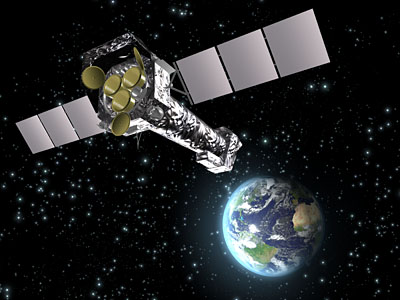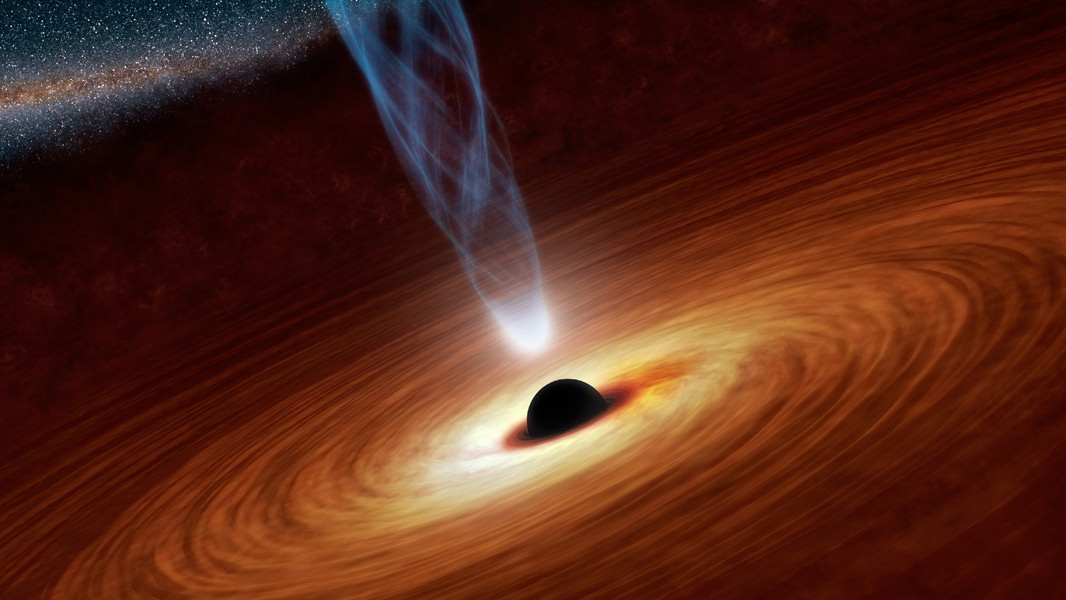6 million years ago, when our first human ancestors were doing their thing here on Earth, the black hole at the center of the Milky Way was a ferocious place. Our middle-aged, hibernating black hole only munches lazily on small amounts of hydrogen gas these days. But when the first hominins walked the Earth, Sagittarius A was gobbling up matter and expelling gas at speeds reaching 1,000 km/sec. (2 million mph.)
The evidence for this hyperactive phase in Sagittarius’ life, when it was an Active Galactic Nucleus (AGN), came while astronomers were searching for something else: the Milky Way’s missing mass.
There’s a funny problem in our understanding of our galactic environment. Well, it’s not that funny. It’s actually kind of serious, if you’re serious about understanding the universe. The problem is that we can calculate how much matter we should be able to see in our galaxy, but when we go looking for it, it’s not there. This isn’t just a problems in the Milky Way, it’s a problem in other galaxies, too. The entire universe, in fact.
Our measurements show that the Milky Way has a mass about 1-2 trillion times greater than the Sun. Dark matter, that mysterious and invisible hobgoblin that haunts cosmologists’ nightmares, makes up about five sixths of that mass. Regular, normal matter makes up the last sixth of the galaxy’s mass, about 150-300 billion solar masses. But we can only find about 65 billion solar masses of that normal matter, made up of the familiar protons, neutrons, and electrons. The rest is missing in action.
Astrophysicists at the Harvard-Smithsonian Center for Astrophysics have been looking for that mass, and have written up their results in a new paper.
“We played a cosmic game of hide-and-seek. And we asked ourselves, where could the missing mass be hiding?” says lead author Fabrizio Nicastro, a research associate at the Harvard-Smithsonian Center for Astrophysics (CfA) and astrophysicist at the Italian National Institute of Astrophysics (INAF).
“We analyzed archival X-ray observations from the XMM-Newton spacecraft and found that the missing mass is in the form of a million-degree gaseous fog permeating our galaxy. That fog absorbs X-rays from more distant background sources,” Nicastro continued.

Nicastro and the other scientists behind the paper analyzed how the x-rays were absorbed and were able to calculate the amount and distribution of normal matter in that fog. The team relied heavily on computer models, and on the XMM-Newton data. But their results did not match up with a uniform distribution of the gaseous fog. Instead, there is an empty “bubble”, where this is no gas. And that bubble extends from the center of the galaxy two-thirds of the way to Earth.
What can explain the bubble? Why would the gaseous fog not be spread more uniformly through the galaxy?
Clearing gas from an area that large would require an enormous amount of energy, and the authors point out that an active black hole would do it. They surmise that Sagittarius A was very active at that time, both feeding on gas falling into itself, and pumping out streams of hot gas at up to 1000 km/sec.
Which brings us to present day, 6 million years later, when the shock-wave caused by that activity has travelled 20,000 light years, creating the bubble around the center of the galaxy.
Another piece of evidence corroborates all this. Near the galactic center is a population of 6 million year old stars, formed from the same material that at one time flowed toward the black hole.
“The different lines of evidence all tie together very well,” says Smithsonian co-author Martin Elvis (CfA). “This active phase lasted for 4 to 8 million years, which is reasonable for a quasar.”
The numbers all match up, too. The gas accounted for in the team’s models and observations add up to 130 billion solar masses. That number wraps everything up pretty nicely, since the missing matter in the galaxy is thought to be between 85 billion and 235 billion solar masses.
This is intriguing stuff, though it’s certainly not the final word on the Milky Way’s missing mass. Two future missions, the European Space Agency’s Athena X-ray Observatory, planned for launch in 2028, and NASA’s proposed X-Ray Surveyor could provide more answers.
Who knows? Maybe not only will we learn more about the missing matter in the Milky Way and other galaxies, we may learn more about the activity at the center of the galaxy, and what ebbs and flows it has gone through, and how that has shaped galactic evolution.

